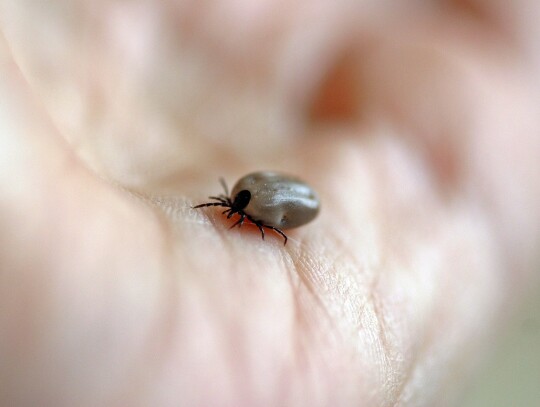SPRINGFIELD – The Illinois Department of Public Health (IDPH) is urging the public to get educated about how to protect themselves from Lyme disease at the start of National Lyme Disease Awareness Month. This year the Department is also unveiling a new resource to make it fun for families to learn about tickborne illnesses and “Fight the Bite”: Tick Defense flyer and Knowledge Check crossword puzzle.
“Lyme disease is the most common vector-borne illness in the United States,” said IDPH Director Dr. Sameer Vohra. “We encourage everyone who enjoys spending time outdoors to get educated about how to protect themselves from tickborne illnesses. Please review our many IDPH resources and join us as we all work together to Fight the Bite.”
Director Vohra said the most important thing people can do to “Fight the Bite” is to diligently check themselves, their pets, and help children with a tick check after spending time in areas where ticks live, such as in and near wooded areas, tall grass, and brush. Removing ticks within a 24-hour period reduces the risk of potential disease transmission.
In addition to Lyme disease, other tickborne diseases include Spotted Fever Group Rickettsiosis, tularemia, ehrlichiosis, and babesiosis.
IDPH has created an interactive Tick Surveillance Map that documents the counties in Illinois where the different tick species have been confirmed.
Following are additional tips for how to avoid tickborne illnesses and have a healthy time in the outdoors:
- Learn about tick removal and symptom awareness (IDPH website).
- Walk in the center of trails. Avoid wooded, brushy areas with high grass and leaf litter.
- Wear light-colored clothing to make ticks easier to find. Tuck long pants into socks and boots.
- Apply an EPA-registered insect repellent containing 20% DEET, picaridin, IR3535, or Oil of Lemon Eucalyptus according to label directions.
- Treat clothing and gear with products containing 0.5% permethrin. Permethrin can be used to treat boots, clothing and camping gear and remain protective through several washings
- Conduct full-body tick checks on family members (underarms, ears, belly button, behind knees, between legs, waist, hair and scalp) every two to three hours. Also check any gear or pets taken on outings.
- Put your clothes in the dryer on high for 10 minutes (or one hour for damp clothes) to kill ticks.
- Shower within two hours after coming indoors.
If you become ill with fever and/or rash after being in an area where ticks may have been, contact your health care provider. Some tick-borne illnesses can be life-threatening. For example, if untreated Rocky Mountain Spotted Fever may cause death as quickly as five days after symptom onset.
(Komunikat prasowy)










